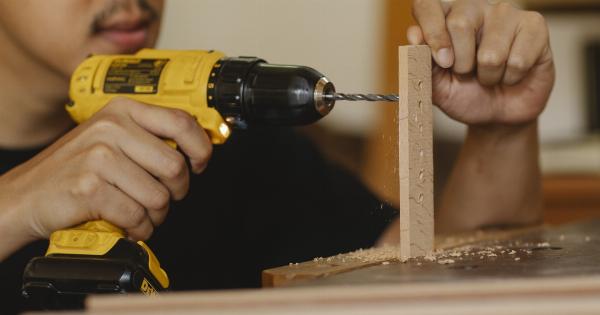Walking with confidence is essential for maintaining an active and healthy lifestyle. For individuals with venous conditions, the use of venous stents can provide significant relief and improve their ability to walk comfortably.
Venous stents are medical devices designed to open up narrowed or blocked veins, allowing for better blood flow and alleviating symptoms such as pain, swelling, and fatigue. In this article, we will explore how venous stents can help individuals regain their confidence while walking and lead a more fulfilling life.
Understanding Venous Conditions
Venous conditions, such as deep vein thrombosis (DVT) and chronic venous insufficiency (CVI), can negatively impact a person’s ability to walk comfortably. DVT occurs when blood clots form in the deep veins of the body, primarily in the legs.
This can cause pain, swelling, and difficulty walking. CVI, on the other hand, is a condition in which the valves in the veins become weak or damaged, leading to ineffective blood flow and resulting in symptoms like leg pain, swelling, and ulcers.
The Role of Venous Stents
Venous stents are small, flexible tubes that can be inserted into narrowed or blocked veins to restore proper blood flow. They are typically made of metal and expandable, allowing them to open up the vein and maintain its patency.
Venous stents are often used in conjunction with a minimally invasive procedure called venoplasty, in which a balloon catheter is inserted into the vein and inflated, compressing the plaque or clot and improving blood flow. Once the vein is widened, the stent is implanted to keep the vein open and prevent re-narrowing.
The Benefits of Venous Stents
Venous stents offer several benefits for individuals suffering from venous conditions:.
1. Improved Blood Flow
By opening up the narrowed or blocked vein, venous stents ensure a better blood flow. This improves oxygen and nutrient delivery to the tissues and helps in the removal of waste products.
As a result, individuals experience reduced pain, swelling, and fatigue, allowing them to walk with greater ease.
2. Enhanced Mobility
With improved blood flow and reduced symptoms, individuals can enjoy enhanced mobility. They can walk longer distances without discomfort, participate in physical activities, and engage in exercises that promote cardiovascular health.
Venous stents empower individuals to lead an active and fulfilling life.
3. Prevention of Complications
Venous stents play a crucial role in preventing complications associated with venous conditions.
By keeping the veins open, they minimize the risk of blood clots forming in the legs and traveling to other parts of the body, such as the lungs (pulmonary embolism). This significantly reduces the chance of life-threatening situations and ensures the overall well-being of individuals.
4. Quick and Minimally Invasive Procedure
The insertion of venous stents is a minimally invasive procedure that can be performed on an outpatient basis. It typically requires only local anesthesia, and most individuals can resume their daily activities within a short period.
The use of venous stents provides a convenient and efficient solution for managing venous conditions and allows individuals to walk confidently soon after the procedure.
5. Long-Lasting Results
Venous stents are designed to provide long-lasting results. They are made of durable materials that can withstand the pressure exerted on the veins during movement.
The stents remain in place, keeping the veins open and ensuring sustained improvement in blood flow and symptom relief. This long-term benefit enables individuals to enjoy a better quality of life and maintain their walking confidence.
Candidate Selection for Venous Stents
While venous stents offer numerous advantages, not all individuals with venous conditions are suitable candidates for this treatment. The decision to use venous stents is made after a thorough evaluation by a vascular specialist.
Factors considered include the severity of the condition, the location of the blockage, the patient’s overall health, and any potential risks associated with the procedure. An individualized approach ensures that those who can benefit the most from venous stents receive this intervention.
Potential Risks and Complications
Although venous stent placement is generally safe and effective, like any medical procedure, it carries some risks.
Potential complications can include stent migration, stent fracture, blood clots forming around the stent, bleeding, infection, or allergic reactions to the stent material. However, these complications are rare, and healthcare professionals take precautions to minimize the risk factors and maximize the benefits of venous stenting.
Recovering and Walking Confidently
After the placement of venous stents, individuals can gradually resume their daily activities, including walking and exercise.
While complete recovery times may vary, most individuals can expect improvements in symptoms and walking ability within a few weeks or months post-procedure. Maintaining a healthy lifestyle, following the advice of healthcare providers, and participating in prescribed physical therapy can contribute to a quicker recovery and enhance walking confidence.
Lifestyle Changes for Long-Term Benefits
In addition to venous stent placement, certain lifestyle changes can provide long-term benefits for individuals with venous conditions. These include:.
1. Regular Physical Activity
Engaging in regular physical activity, such as walking, swimming, or cycling, promotes better blood flow and overall cardiovascular health.
It also helps in maintaining a healthy weight, reducing the strain on the veins, and preventing future complications.
2. Healthy Diet
A well-balanced diet consisting of fruits, vegetables, whole grains, and lean proteins can contribute to overall vascular health.
Consuming foods rich in antioxidants and anti-inflammatory properties can help reduce inflammation in blood vessels and support healthy blood flow through the veins.
3. Compression Therapy
In cases where chronic venous insufficiency is present, wearing compression stockings or sleeves can aid in improving blood circulation.
Compression garments apply gentle pressure on the legs, allowing the veins to function more efficiently and reducing swelling and discomfort during walking.
4. Regular Check-ups
Continuing regular check-ups with vascular specialists is essential for monitoring the progress of venous conditions and ensuring the functionality of the venous stents.
Routine examinations and imaging tests help detect any potential issues early on and facilitate timely interventions if needed.




























